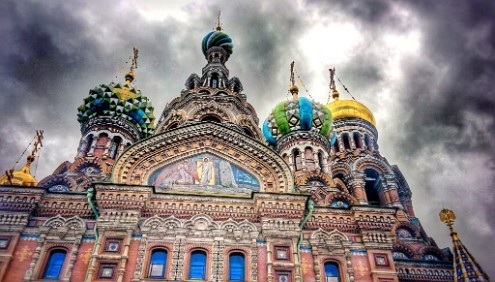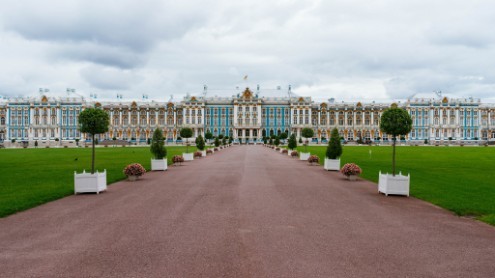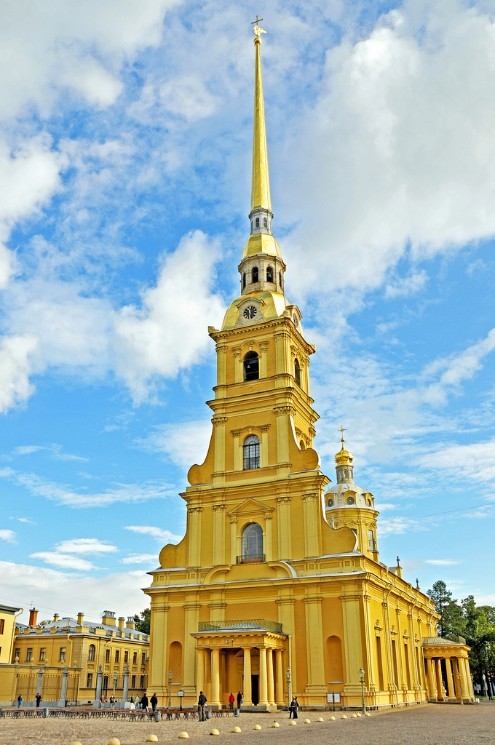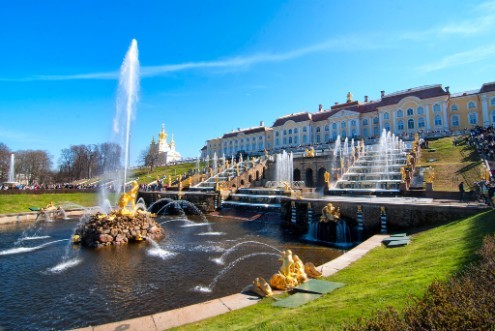Russia’s second largest city sits on the estuary of the Neva, where the river meets the Baltic Sea. Saint Petersburg is one of the most modern cities in Russia and is considered by many to be its cultural capital, brimming with museums, galleries, and theatres. Indeed, the historic centre of the city and its monuments have been named by UNESCO as a World Heritage Site recognised for its architectural heritage, which fuses influences from the Baroque, Neoclassical, and traditional Russian-Byzantine styles.
Coupled with canals, parks, and a fairly compact footprint, these attractions make Saint Petersburg an ideal city-break destination, particularly from May to September and around the time of the ‘White Nights’ at midsummer.
What to see and do in Saint Petersburg
The Hermitage

Image Credit: Ninara
The Hermitage is one of the must-see destinations in Saint Petersburg; this phenomenal structure along the Dvortsovaya nab riverside is often preceded by its reputation. Apart from its architectural beauty, its five buildings contain numerous treasures to enjoy and explore, so it’s best to plan your visit in advance.
- Winter Palace - This mint-green, white, and gold palace was an imperial home between 1754 and 1917. Today its grand reception halls and chambers are open for tours and the many galleries of antiquities, paintings, and sculptures can be explored.
- Small Hermitage - Originally used as a retreat by Catherine the Great and to house Peter the Great’s art collection, this building is home to the ceremonial Pavilion Hall with its 28 chandeliers, the incredible Peacock Clock, and a copy of a wonderful Roman floor mosaic.
- Great Hermitage - This part of the museum houses Italian Renaissance art, including works by da Vinci, Raphael, Botticelli, and Caravaggio.
- New Hermitage - The neoclassical building holds more of the growing art collection, including the Raphael Loggias, copies of the original frescoes in the Vatican that had impressed Catherine the Great on her visit there.
- Hermitage Theatre - Once the private theatre of the imperial family, it’s best to book early if you’d like to see a classic ballet like Swan Lake or Giselle.
Church of the Saviour on the Spilled Blood

Image Credit: Dennis Sylvester Hurd
This church, whose colloquial name references the assassination attempt on Tsar Alexander II there in 1881, resembles Moscow’s iconic St Basil’s cathedral. With its five domes, classic Russian Orthodox exterior, and 7000 square metres of mosaics internally, this beautiful building is certainly worth visiting.
General Staff Building

Image Credit: Richard Mortel
This magnificent building, designed in the 1820s, is found on the south side of Dvortsovaya Ploshchad. It displays the vast collection of the Hermitage’s Impressionist and Post-Impressionist works, as well as some contemporary art.
Catherine Palace

Image Credit: Marco Verch
A little outside central Saint Petersburg in Pushkin can be found the baroque Catherine Palace, named after Peter the Great’s second wife. The interior has been beautifully restored and the interiors - from the Great Hall, Cavalier’s Dining Room, and White State Dining Room to the Portrait Hall and the famous Amber Room - are superb. The Catherine Park gardens outside are beautiful too; in the summer you can take a ferry to the little island to see the Chesme Column, or explore the other buildings built by the royals.
Peter and Paul Fortress and Cathedral

Image Credit: Dennis Jarvis
The large defensive fortress formed the cornerstone of Saint Petersburg and houses a cathedral, a former prison, and various exhibitions - as well as offering stunning panoramic views from the top of the walls. During the summer, it’s possible to climb the needle-thin spire of the baroque cathedral’s bell tower.
Grand Palace and Lower Park

Image Credit: Yuhyi
The Grand Palace is a imposing building overlooking the Lower Park in Peterhof, with notable highlights including the East and West Chinese Cabinets, the Picture Hall, Peter’s Study, and the Throne Room. Outside, the Grand Cascade is the centrepiece with its 140 fountains and canals, and the astounding collection of gilded fountains, statues, and picturesque canals continues throughout the Lower Park.
Title Image Credit: Ninara (Image Cropped)